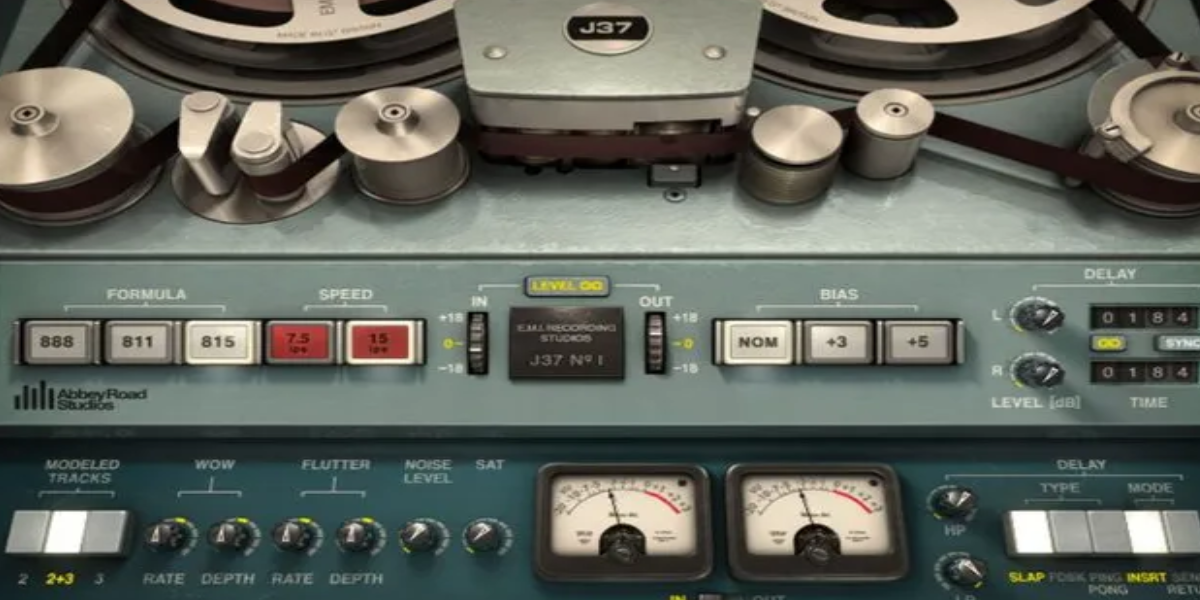
- By sauceaud
- July 4, 2025
- Saturation Plugins
For producers and engineers, producing a warm, rich, analog-like sound is frequently the ultimate goal in the music industry. That’s where saturation plugins step in. These tools emulate the pleasing harmonic distortion of analog gear, helping your mixes feel fuller, punchier, and more alive. Whether you’re working on a lo-fi track, an orchestral score, or a hip-hop beat, saturation can be the secret ingredient that glues your sound together.
What is saturation?
Saturation is the subtle distortion that happens when audio passes through analog hardware like tape machines, tube preamps, or transformers. Instead of just increasing volume, saturation enhances harmonics, colors your sound, and can even compress it slightly in a musical way.
In the plugin world, saturation effects digitally recreate this phenomenon, allowing you to add everything from silky smooth warmth to gritty crunch with just a few clicks.
Why Use Saturation in Mixing and Mastering?
Glue Your Mix Together: Saturation helps different elements in your mix feel connected. By introducing harmonic content across channels, it creates a sense of cohesion and warmth, especially when applied subtly to groups or the master bus.
Enhance Character and Punch: Saturation adds bite to drums, presence to vocals, and thickness to bass lines. A snare can cut through the mix better, or a vocal can sound more intimate and alive—all thanks to the harmonic richness saturation brings.
Analog Vibes in a Digital World: Even in fully digital production environments, saturation plugins recreate the vintage mojo of tape, tubes, and consoles. This gives your tracks an organic, timeless feel.
Subtle Compression and Peak Control: Saturation naturally smooths transients, which can help tame peaks without the need for aggressive compression. That makes it perfect for mastering chains, where transparency is key.
Types of Saturation and When to Use Them
Tube Saturation—Warm, rich, and musical. Great for vocals, synths, and mastering. It adds smooth harmonics and creamy distortion that flatters most sources.
Try on lead vocals, strings, and acoustic guitars.
Tape Saturation—Softens high frequencies and adds slight compression. Perfect for making digital recordings feel more analog and cohesive.
Try on: drum buses, full mixes, piano.
Transistor/Transformer Saturation—Punchy and aggressive. Adds grit and forwardness. Ideal for genres like rock, hip-hop, and electronic music.
Try out bass, snares, and electric guitars.
Tips for Using Saturation Plugins Effectively
- Less is more: Subtlety often yields the most musical results.
- Use ears, not eyes: Don’t rely solely on meters—listen closely to the changes.
- Parallel processing: Blend in a saturated signal with your clean audio for control.
- Stacking saturation: Light touches across several stages (track, group, master) can sound more natural than heavy saturation in one place.
Recommended Saturation Plugins from Sauce Audio’s Premium Selection
At Sauce Audio, you’ll find a curated lineup of top-tier saturation plugins that deliver professional-grade results:
- Warm Drive Saturator—A tube-modeled plugin perfect for lush vocals and silky mastering.
- Tape Deck Revival—Brings classic analog tape character to your mixes with wow/flutter options.
- Crunch Core XT—Add aggressive harmonics for bass, drums, or dirty synths.
Each plugin is designed for precision control, creative flexibility, and high-quality analog emulation.
Sauce Audio’s Top Picks for Saturation Plugins
At Sauce Audio, we’ve curated some of the most powerful, intuitive, and authentic-sounding saturation plugins for producers and engineers. Here are a few standouts:
- Velvet Tube—A lush tube saturation plugin perfect for vocals and melodic instruments. Adds rich harmonics and creamy warmth.
- Magnetic Tape Saturator—Inspired by classic reel-to-reel tape machines. Adds subtle compression, tape hiss, and magnetic mojo.
- Console Craft—Analog console channel strip emulator with built-in saturation stages. Perfect for gluing your mix together.
- Heatwave Transient Saturator—Engineered for drums and transients. Adds punch and presence without harshness.
How to Use Saturation Plugins in Your Workflow
Saturation is subtle—less is often more. Here’s how you can integrate saturation plugins effectively during mixing and mastering:
- On Vocals—Vocals are the emotional center of most songs. Saturation can bring forward presence, grit, or even soft warmth.
Tip: Use tube saturation to add intimate warmth or subtle excitement. Avoid overdoing it—harshness can kill clarity.
- On Drums—Drums benefit greatly from saturation. It enhances the attack of kicks, thickens snares, and brings out room tone in overheads.
Tip: Tape saturation on drum buses adds a cohesive analog glue, while transistor saturation adds punch.
- On Synths & Guitars—Saturation helps synths and guitars cut through dense mixes without harsh EQ boosts.
Tip: Add mild saturation to analog-modeled synths to simulate a hardware feel.
- On the mix bus (master bus), warmth, glue, and perceived loudness can all be improved with a little saturation throughout the entire mix.
Tip: Use subtle console saturation with high headroom settings. It should enhance, not overpower.
Common Mistakes to Avoid
Even with the best tools, misuse can lead to muddy or distorted mixes. Here are some common mistakes to steer clear of:
- Saturating every track individually: This can cause frequency build-up and fatigue.
- Overdriving delicate instruments: Strings, pads, or acoustic instruments need gentle saturation, if any.
- Neglecting gain staging: Always match output levels to compare fairly.
- Using only one saturation type: Mix and match styles for unique textures.

Final Thoughts
Saturation is more than just distortion—it’s a creative tool that adds color, emotion, and life to your music. When used intentionally, saturation plugins can elevate your mix from clean and clinical to rich and dynamic.
Whether you’re a beginner learning to warm up your first tracks or a seasoned producer refining your mastering chain, Sauce Audio’s premium selection of saturation plugins offers the tone-shaping power you need to bring your productions to life.
FAQs
What's the difference between distortion and saturation?
Distortion is more aggressive and can be harsh, while saturation is typically warmer and adds harmonic richness subtly.
Should I use saturation on every track?
Not necessarily. Use it where it enhances the tone—vocals, drums, and bass often benefit the most.
Can saturation replace EQ or compression?
Not entirely, but it can complement both by adding tone and soft compression naturally.
Is tape saturation good for mastering?
Yes, when used subtly, it can add glue and warmth without damaging dynamics.
What's a good beginner-friendly saturation plugin?
Sauce Audio’s Warm Drive Saturator is intuitive and versatile—perfect for newcomers.
